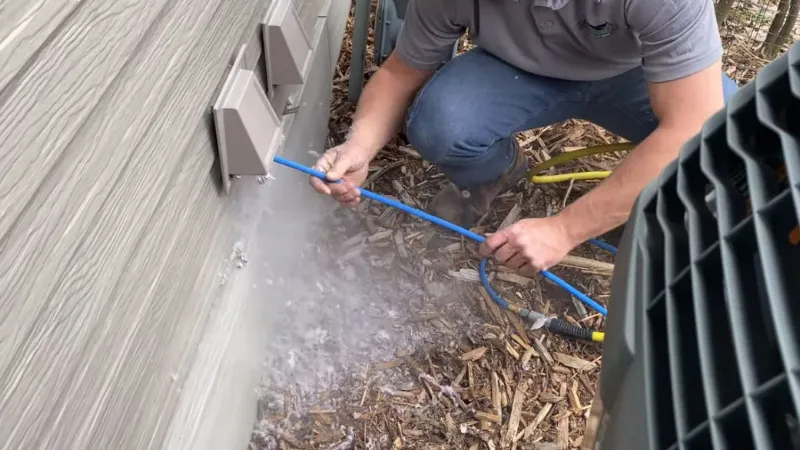How often to clean dryer vent? A dryer vent needs to be cleaned regularly to enhance the dryer’s efficiency. Regular dryer vent cleaning helps to remove lint and other dirt and debris that are obstructing the dryer performance.
A good rule of thumb is to clean dryer vents annually to remove any built-up lint. However, if your dryer pipe is long and has a lot of turns, you may need to clean the vents every six months if you use the dryer a lot.
Please read on.
How Often Should You Clean a Lint Trap Vent and the Dryer Vent?
According to experts the lint trap vent should be cleaned after every load and dryer vent – at least once per year. However, it is recommended that you clean the dryer vent more often if:
Family Size
A large family size means more loads of clothes need to be washed each day. The amount of lint that builds up in the dryer increases with how often you use it each day. Therefore, it needs to be cleaned several times a year.
Presence of Pets
If you keep pets in your house, then it means that the vents will get clogged more quickly than in pet-free homes. Therefore, it’s imperative to regularly clean the dryer to get pet hair and fur out of the vent.
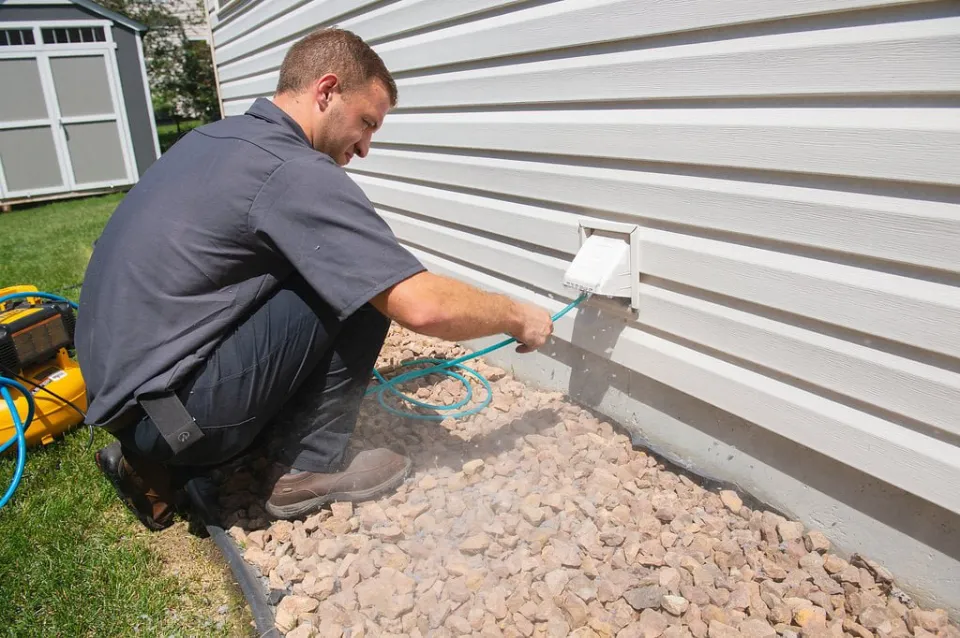
How Often You Purchase New Clothes
Research has shown that new clothes produce more lint than old clothes. So, if you like buying new clothes frequently, then you need to clean your dryer vents several times a year.
Type of Laundry
More lint is produced by bulky items like blankets and towels, which quickly clogs the dryer vent. Therefore, it is suggested that you clean your dryer vent several times a year if the bulk of your laundry is made up of large, bulky items.
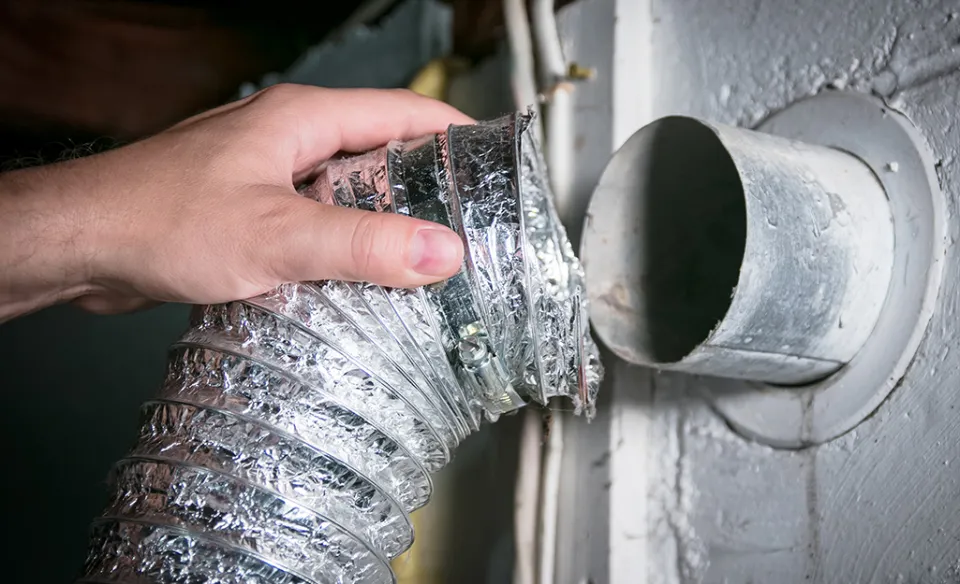
What Does a Complete Dryer Vent Cleaning Include?
Cleaning the dryer vents involves more than just clearing the filter of debris. There are numerous other items that require inspection and cleaning. Below is a step by step process on what a complete dryer vent cleaning involves.
1: Examine the dryer vent opening. The dryer vent needs to be thoroughly inspected outside.
2. Eliminating barriers. To ensure that the lint can flow freely, all dirt, debris, leaves, and animal waste that have gathered on the exterior are cleared away.
3. Cleaning up the lint and other debris that has accumulated on the dryer vent.
4. Clean the space behind the dryer.
5. The final step involves cleaning the dryer lint trap and the drum thoroughly.
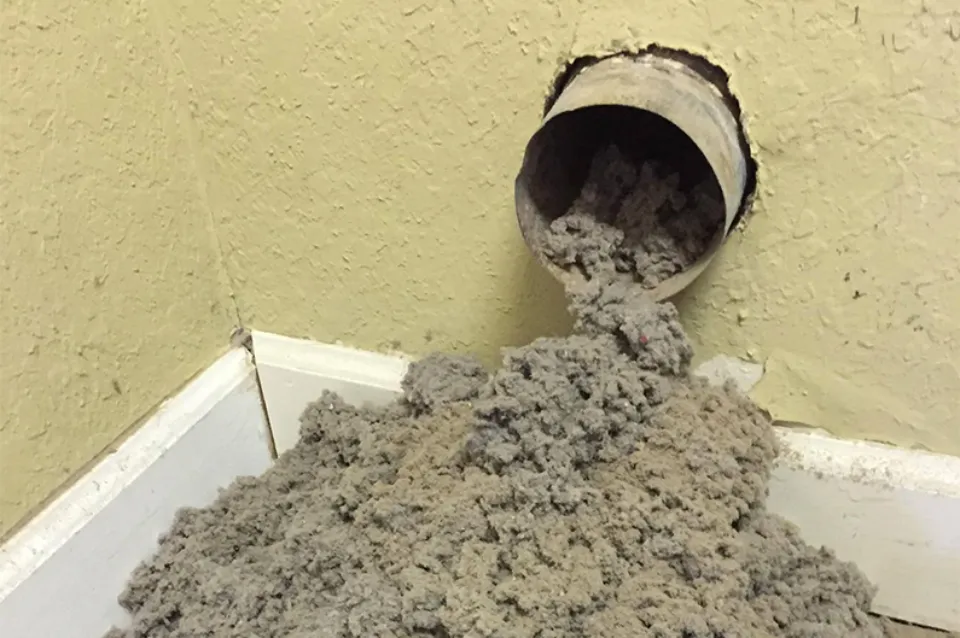
Signs That Your Dryer Vent Needs Cleaning
Here are the signs that your dryer vent needs cleaning:
Drying Time
The fact that it takes your clothes a long time to dry or don’t dry at all is likely the biggest indication that your dryer vent needs to be cleaned.
Your dryer’s efficiency decreases and eventually stops drying your clothes completely when lint restricts the air flow in the dryer duct.
Slow Air Flow
Checking the air flow on a regular basis is a good habit for homeowners. All you have to do is turn on your dryer and then check the airflow at the cover of the exterior vent. You might not be able to do it yourself, of course, if your dryer vent runs to the roof.
But if the air flow is poor or nonexistent, you’ll need a dryer vent cleaning.
Also, if you know how strong the air flow should be (such as after a dryer vent cleaning) — then you will have a good comparison for when the air flow slows down.
The duct may be blocked by a hard-to-remove obstruction, a bird’s nest, or the duct may be disconnected inside the wall if there is still little to no air flow after cleaning.
Dryer Gets Very Hot
The dryer’s interior and the drum occasionally become hot to the touch when the dryer vent is dirty.
This is because there is so much lint in the dryer duct that it restricts air flow and makes it harder for the dryer’s heat to escape to the outside.
Burning Smell
Turn off your dryer as soon as you notice any strange smells coming from it, such as a burnt smell, and make an appointment for a professional cleaning. You can read my full guide on dryer burning smells here.
A lint clog that is actually smoldering somewhere inside the duct is the usual cause of a burning smell.
Since lint is very flammable, once it clogs a dryer vent, the heat from the dryer builds up in the duct and can ignite it. I’ve been in homes where dryer duct fires occurred, and dryer vent clogs are a common cause of fires in the US.
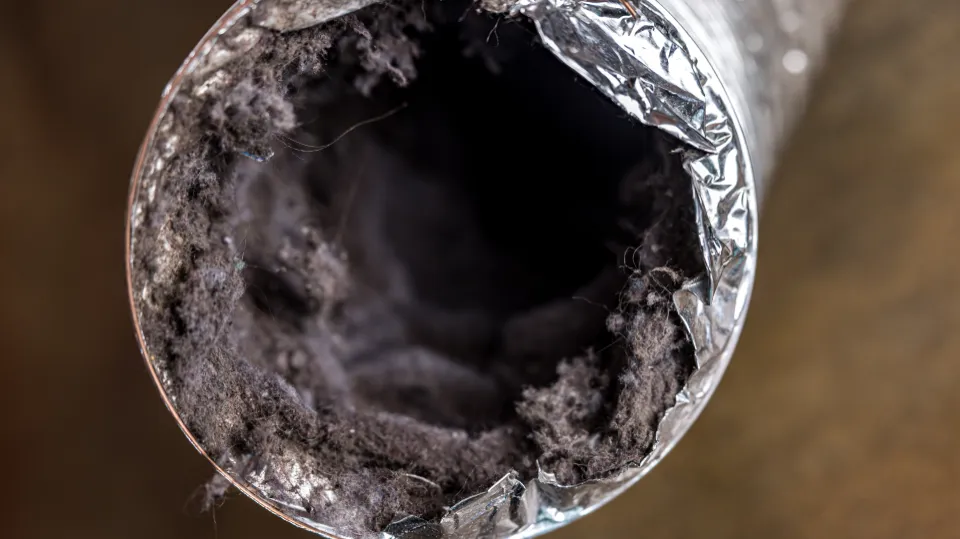
The Dryer Vent Cleaning Process
Professional dryer vent cleaning businesses typically clean dryer vents using one of two methods.
Utilizing tools with compressed air is the first method. In essence, they use a substantial air compressor and a long air hose. When compressed air is released from a tool at the end of the air hose, it moves around the dryer duct, loosening the lint before being blown out.
The other popular method of cleaning dryer vents involves the use of long metal cables that have brushes attached at the end of them. After being loosened by the brush’s entry into the dryer duct and being blown out, the lint that had been adhered to the duct was removed.
You can also buy tools for DIY dryer vent cleaning at home.
Most homeowners should hire a company to clean their dryer vents.
What Do You Gain from Regular Dryer Vent Cleaning?
- It saves energy
Regular dryer vent cleaning will increase its effectiveness and reduce the amount of power it uses. Regular dryer vent cleaning can reduce energy costs by up to 30% for homeowners.
- Reduced maintenance cost
When the dryer vent is cleaned regularly, it is less likely to overheat or get clogged. It’s less likely to malfunction or run into a technical issue as a result.
- Reduces the risk of fire
Lint is a substance that easily catches fire. It could catch fire and spread havoc if it is allowed to build up on the vent. Lint buildup can be avoided through routine cleaning, lowering the risk of fire.
- It reduces wear and tear on the dryer
Regular dryer vent cleaning reduces the amount of energy required by the dryer to dry your clothes by half. Important parts of the dryer may become damaged by this excessive strain. Regular maintenance reduces wear and tear by increasing dryer efficiency.
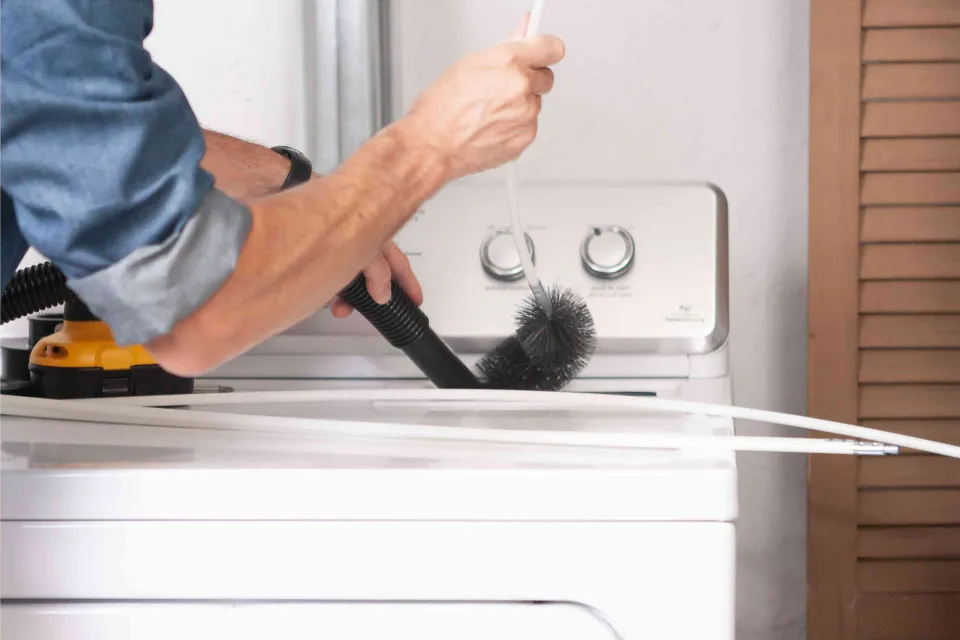
How to Keep Your Dryer Vent Clean?
- If you currently use dryer sheets, replace them with liquid fabric softener.
- Replace flexible vent pipe with a solid vent pipe.
- Place the dryer closer to the external wall.
- Between loads, give the dryer at least 15 minutes to cool.
But even with these precautions, you should clean your dryer vents at least once every 12 months to get rid of the lint and debris and avoid clogs! Hire a professional from Dustless Duct to handle the dryer vent cleaning if you don’t want to do it yourself.
Why Clean Your Dryer Exhaust?
A dryer is one of those things that we often take for granted until it stops working (usually when you have a big load of sopping wet towels that you need dried immediately!) However, a little bit of annual maintenance can go a long way toward maintaining your dryer and lengthening its life. If a dryer is clogged, it forces the machine to work harder, causing it to wear out quicker.
For the sake of both your family’s safety and your own, you should also have your dryer vent cleaned. Highly flammable lint is created and accumulated by dryers. The primary cause of dryer fires is improper lint removal from the system.
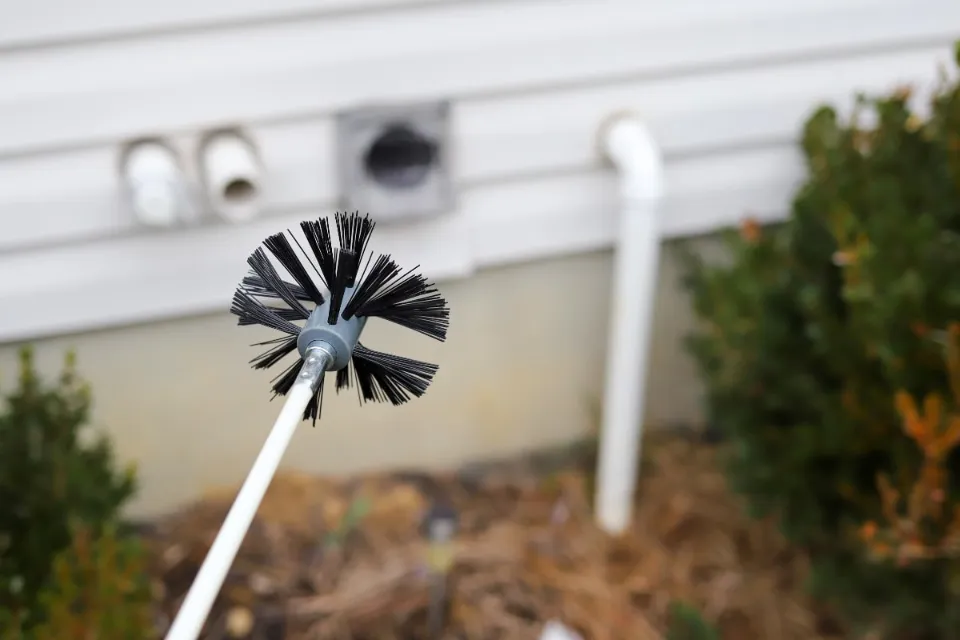
Here is a video on How To Clean Your Dryer Vent Duct:
FAQs
Is Professional Dryer Vent Cleaning Necessary?
The answer is a resounding yes! You should absolutely have your dryer vents professionally cleaned regularly. National Fire Protection Agency data indicates that between 2010 and 2014, U.S. fire departments responded to an estimated 15,970 home fires involving clothes dryers or washing machines each year.
What Can Happen If You Don’t Clean Dryer Vent?
Your dryer’s exhaust system can get clogged with lint, which will keep your dryer from functioning properly. As a result, your dryer will use more energy, take longer to dry your clothes, and present a fire hazard. This is a lose-lose-lose scenario.
Can Dryer Vent Cleaning Cause Damage?
Manually cleaning the dryer’s vent is not recommended because it can cause damage. This might involve the vent being stretched or torn, which causes lint to collect and the airflow to be reduced. In the future, it might cause clogs and expensive repairs.
Summary: How Often to Clean Dryer Vent?
A good rule of thumb is to clean the dryer vent every year to remove any lint buildup. However, if your dryer duct is very long and has many turns, you might want to clean the vent every six months if you use the dryer frequently.
It might only need cleaning every few years if you don’t use the dryer that frequently and your dryer duct doesn’t extend very far outside.
Turning on the dryer and examining the air flow in the exterior vent hood is the simplest way to determine if your dryer vent needs to be cleaned. You should clean the dryer vent if the air flow is slow or sluggish.
If you have any questions, please leave a comment. My Prime Home tries to give you the best home improvement information. Don’t forget to share the post. Thank you for reading.
You may want to know:
